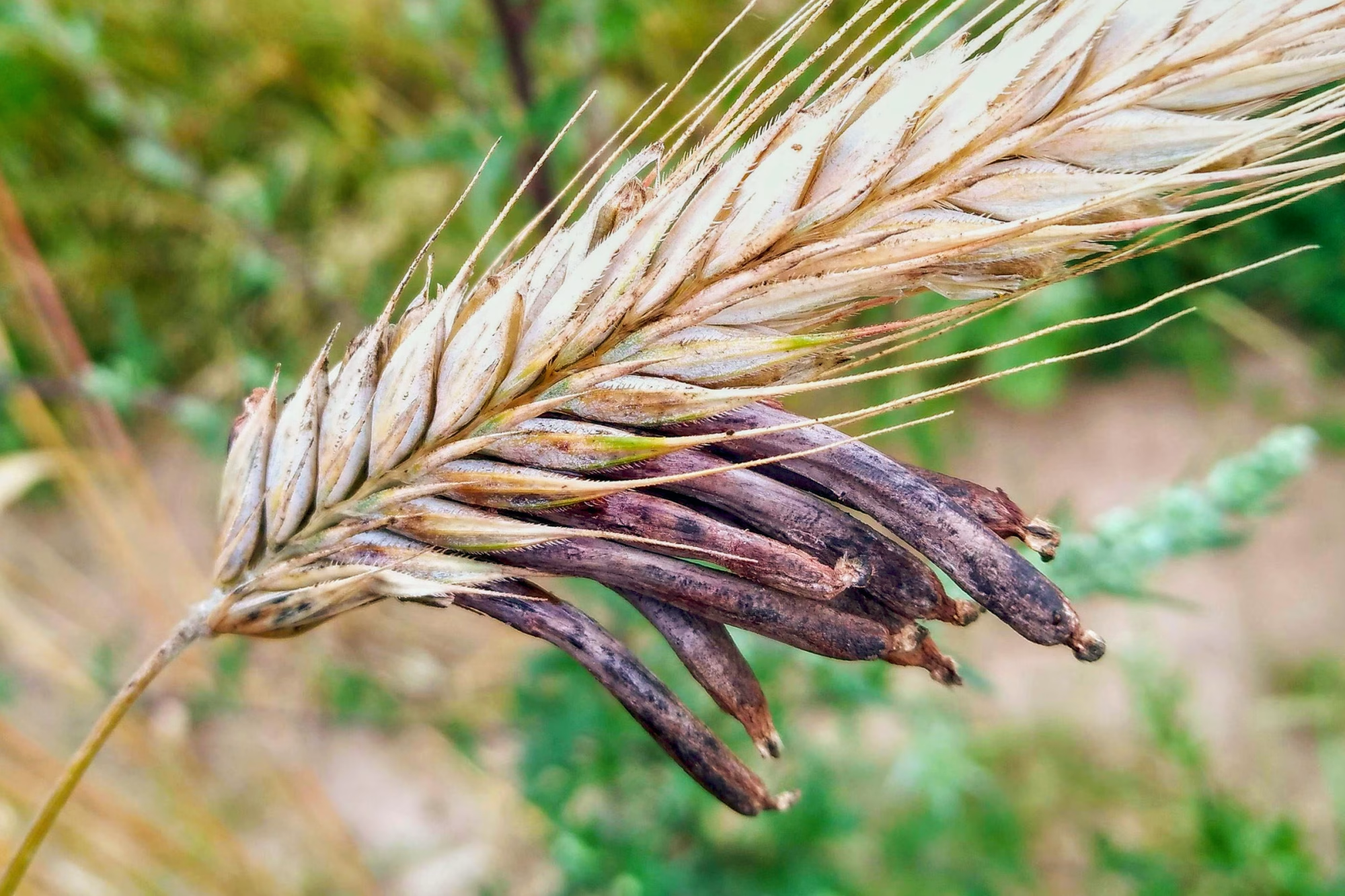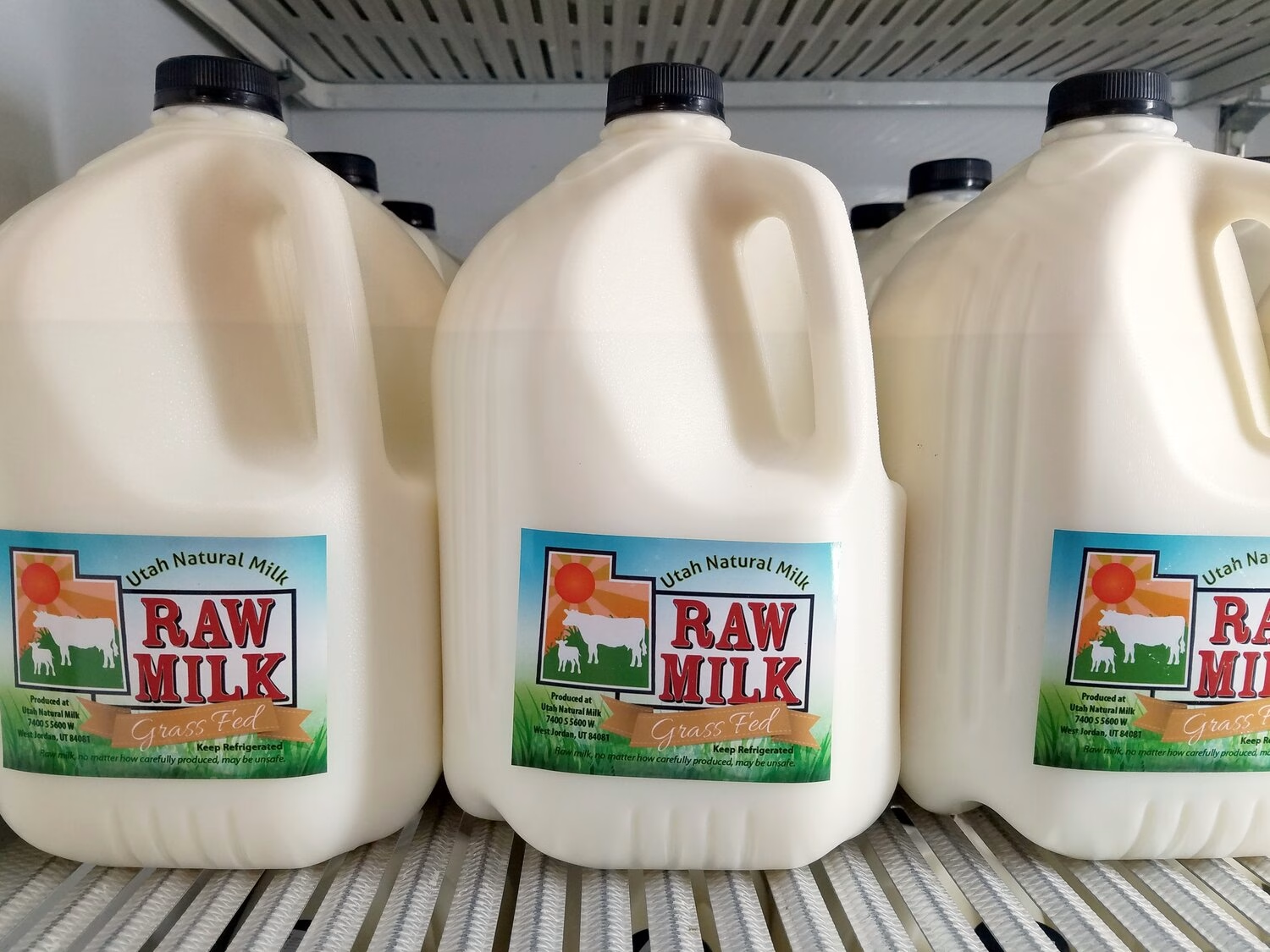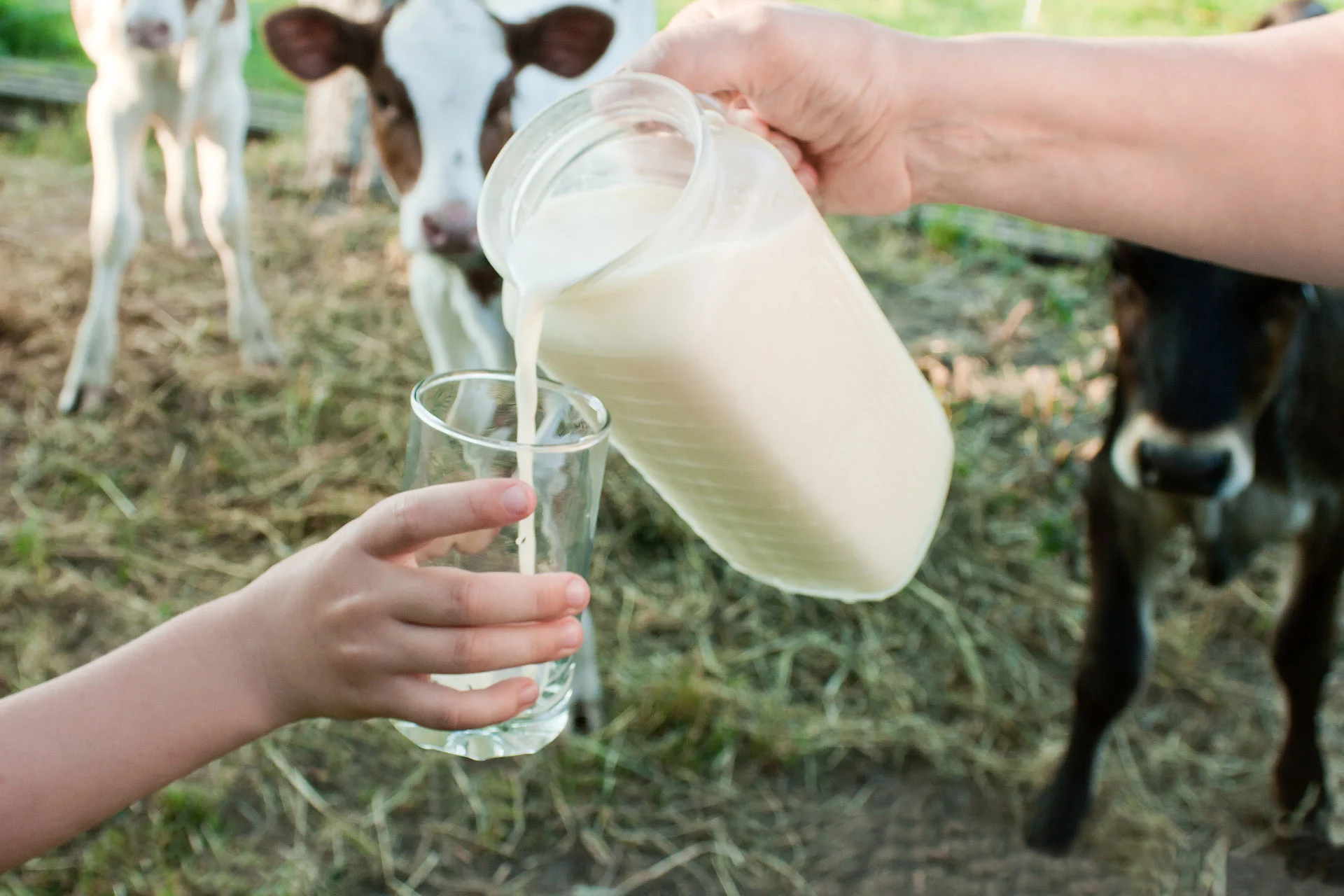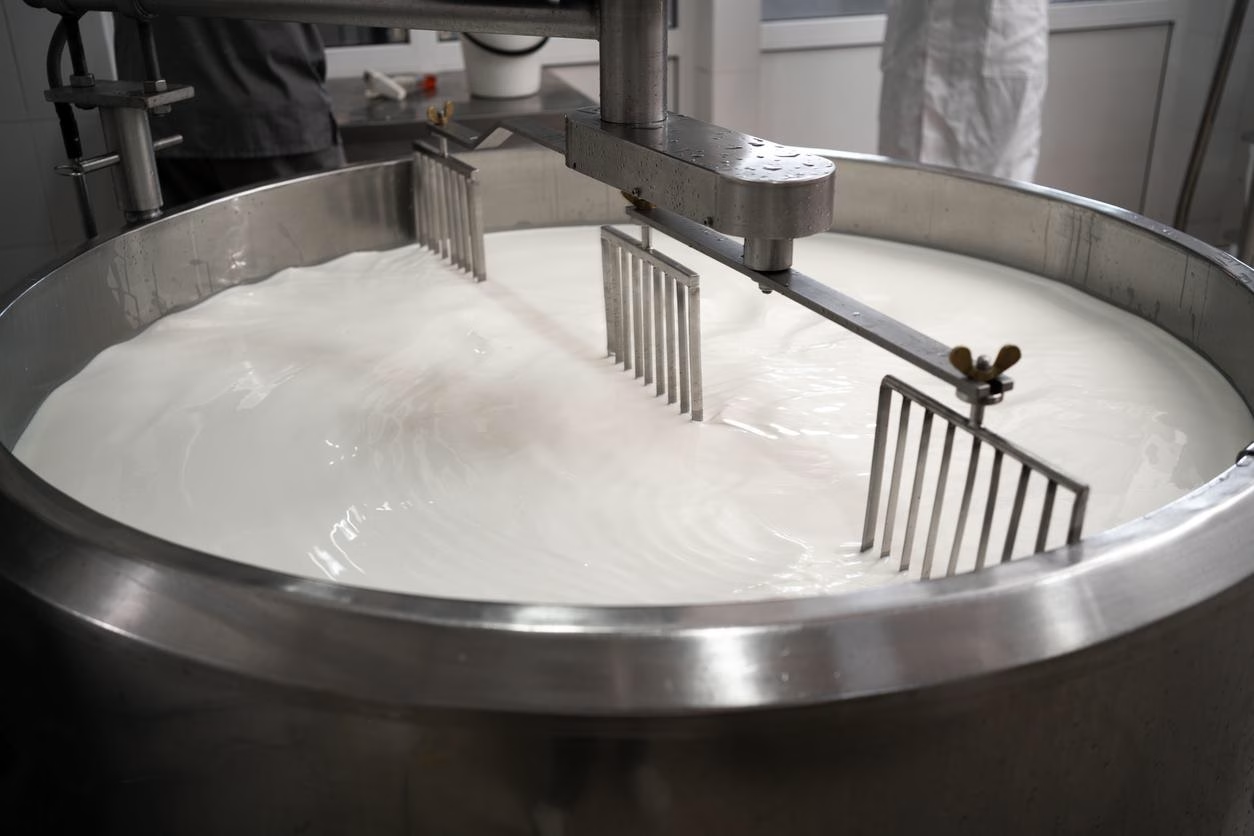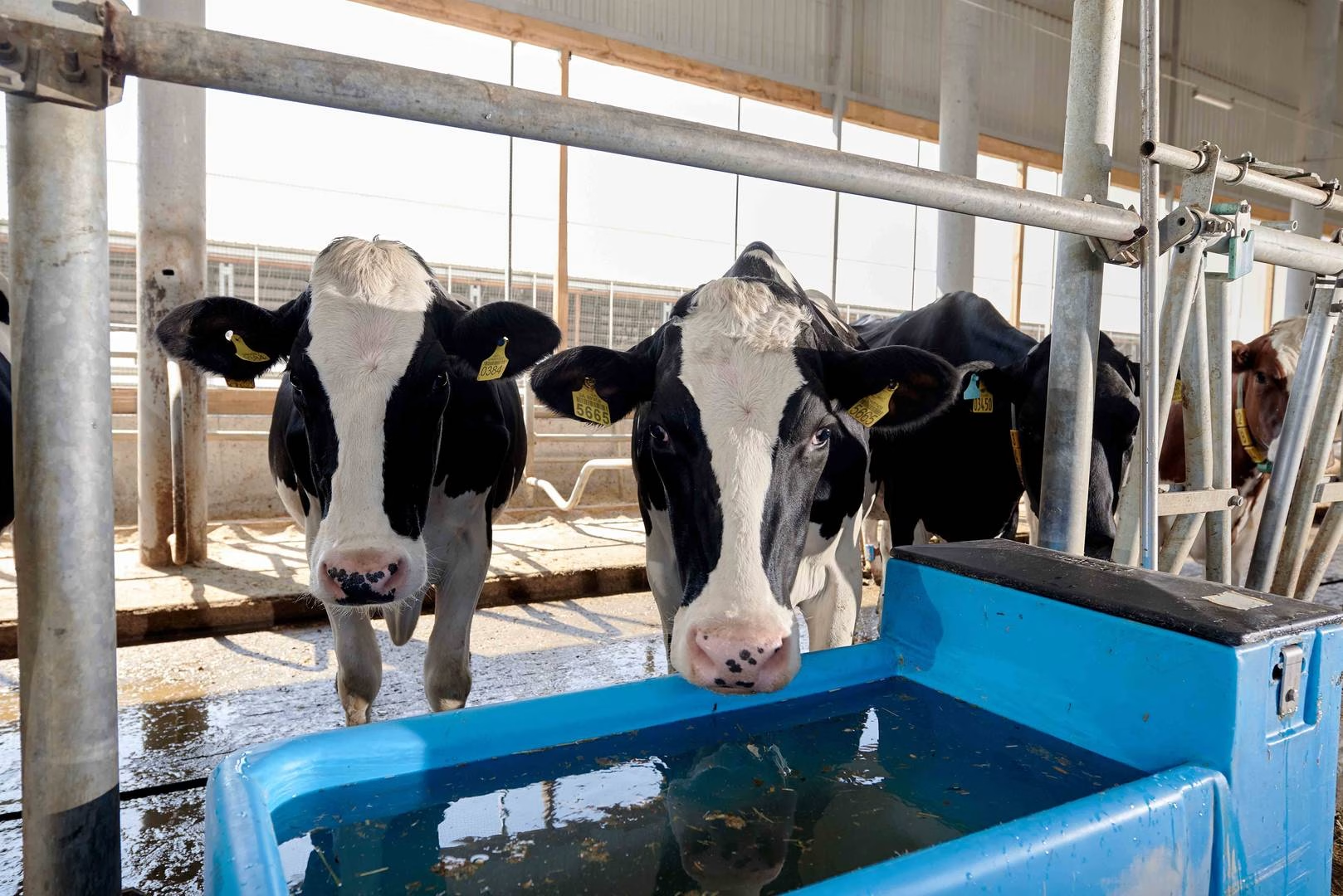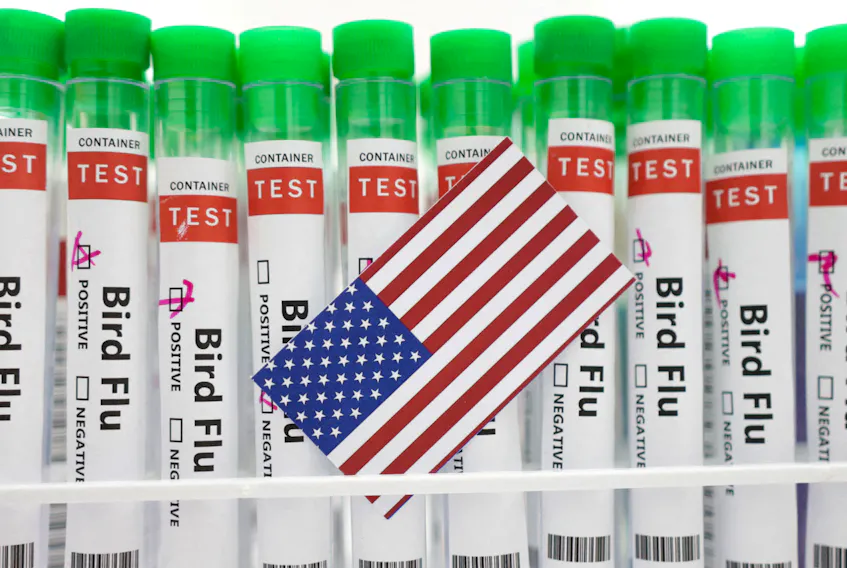Master the crucial 100 days around calving to boost your dairy farm’s success. Discover expert tips on herd health, feeding, and management. Ready to transform your farm?
Summary: The critical 100-day period around calving, which includes 40 days before and 60 days after, drastically influences a cow’s health and productivity. Effective animal observation and herd management can significantly reduce clinical and subclinical diseases, extending the cow’s lifespan and boosting financial success. Preventive measures, such as ensuring maximal dry matter and water intake, minimizing pen changes, and optimizing feed quality, are essential. Implementing needs-based transition diets and high-quality feeds optimizes both feeding and preventive health measures. This not only results in higher milk yields but also healthier cows with longer productive lives. Efficient management practices, like proper dry-off time, careful pen changes, and high-quality feed, greatly improve health, milk output, and farm profitability.
- Careful observation and management during the 100-day period around calving are vital for cow health and farm profitability.
- Maximize dry matter and water intake to maintain cow health and boost productivity.
- Minimize pen changes and provide high-quality feed to reduce stress and improve feed intake.
- Implement needs-based transition diets and focus on feed hygiene to prevent diseases and optimize calcium metabolism.
- Use effective herd management practices like proper dry-off time and precise pen changes to enhance overall farm efficiency.
- Quality silage and high nutritional value in feed can lead to better milk yields and healthier cows.
- Adopting efficient management protocols ensures longer productive lives for cows and higher financial success for the farm.
Have you ever wanted to know the key to healthier, more productive dairy cows? The success of your whole dairy enterprise depends on a vital 100-day period. The 40 days before and 60 days after calving might be critical to your farm’s profitability and herd lifespan. Milk fever, mastitis, and ketosis may be considerably reduced by concentrating on extensive animal observation, essential management techniques, and appropriate nutritional measures.
Remember, the golden rule is ‘Dry matter intake, dry matter intake, dry matter intake’! Implementing needs-based transition diets and using high-quality feeds are not just strategies; they are powerful tools in your hands. These measures and optimized feeding and preventive health strategies can significantly increase milk output and ensure your cows live longer more productive lives. By investing in these strategies, you can transform your farm’s performance and take control of your herd’s productivity.
Navigating Health Risks Beyond Birthing
Calving is more than simply giving birth to a new calf; it also involves managing the various health hazards associated with this critical phase. Common illnesses, including milk fever, metritis, mastitis, ketosis, and acidosis, are severe hazards to your herd’s production and well-being. These disorders may have disastrous consequences if not treated quickly and effectively.
These disorders are especially problematic since they often appear in groups. A cow is unlikely to suffer from just one disease; one problem might pave the way for another, resulting in health difficulties. For example, a cow suffering from milk fever may become more prone to metritis or mastitis, and the metabolic imbalance might result in ketosis and acidosis.
Early diagnosis and prevention are your most valuable partners in addressing these interrelated dangers. By maintaining regular monitoring and close observation, you can detect subtle indicators of sickness before they escalate. Consistent monitoring of feed intake, body temperature, and behavior can help you identify underlying problems early on, empowering you to take proactive measures to ensure your herd’s health and productivity.
Investing in a proactive healthcare regimen, such as regular tests and preventative measures, will pay off significantly. This not only helps to minimize the prevalence of chronic illnesses, but it also saves on the expensive expenses of medical treatments and lost productivity. Employing a solid herd and feeding management plan may significantly reduce hazards.
In essence, the success of your dairy enterprise depends on your ability to manage your herd’s health during calving. Understanding the dangers, detecting them early, and prioritizing preventive measures can keep your cows healthy and productive, eventually increasing your farm’s profitability.
How Meticulous Management Transforms Calving Success
Some farms have successfully addressed typical calving concerns using precise herd and nutrition control. Their unshakable dedication to fundamental responsibilities is often the distinguishing feature. These farms have learned that stressing the essentials, such as maintaining an efficient dry-off time, meticulous pen changeover, and providing robust, high-quality, sanitary feed, keeps the herd healthier and more productive.
The dry-off time prepares a cow’s future production and health. By carefully controlling this time, these farms greatly lower the risk of infections and difficulties after calving.
Furthermore, reducing stress by intentional pen changes and maintaining stable group situations helps to improve feed intake and general well-being. Dairy cows thrive on regularity, and farms that decrease pen modifications around calving see fewer disturbances in feeding patterns, which improves profitability and health results.
The quality of the meal cannot be emphasized. Farms that continuously integrate high-quality, sanitary feed components show fewer illnesses such as ketosis and acidosis, resulting in cows living longer, more productive lives. The financial advantages are evident, but so is the increased quality of life for the animals, which is being more recognized by customers.
The Art of Comfort: How to Stress-Proof Your Dairy Cows
Ensuring cow comfort and avoiding stress during transition is critical to improving overall health and productivity. Proper bedding, appropriate air, and minor handling are essential in attaining these objectives. Comfortable cows are less prone to develop diseases or stress-related difficulties.
First and foremost, proper bedding is required. Providing enough clean and pleasant bedding, such as straw or sand, helps to reduce injury. It creates a relaxing atmosphere, which may reduce the occurrence of mastitis and other health issues. Comfortable bedding encourages cows to lie down and meditate more, which improves digestion and milk output.
Furthermore, proper ventilation must be addressed. Proper ventilation avoids the accumulation of hazardous gases such as ammonia. It maintains a constant supply of fresh air, which is especially important during the warmer months. Proper ventilation systems avoid heat stress, which may significantly impact milk output and cow comfort.
Minimizing handling also helps to reduce stress. Moving cows between pens less often and gently helps minimize stress and improve feed intake and overall cow well-being. Cows thrive in regular settings and routines; avoiding disturbances leads to improved health and production.
Concentrating on these essential components of cow comfort and stress reduction can create a more favorable environment for your herd, resulting in improved health, increased milk output, and, eventually, higher farm profitability.
Every dairy farmer should follow the slogan ‘dry matter intake, dry matter intake, dry matter intake!’ Dry matter intake (DMI) refers to the amount of feed a cow consumes that is not water. Maximizing DMI is critical before and after calving. Cows that ingest more dry matter are healthier and happier, which leads to increased milk output and improved farm profitability. The objective is to maintain optimal DMI levels, ensuring that cows get the nutrients they need to be productive and healthy.
However, more than concentrating on the diet is required; water intake is also critical. Water is the most essential and cost-effective feed component. Many farms limit water consumption without recognizing it due to restricted access to drinkers, inadequate water flow, or a lack of maintenance and cleaning. Always ensure that your cows have ample access to clean water. It is an investment in both their well-being and your farm’s productivity.
Another essential consideration is limiting group changes. Cows thrive on regularity, and each time they are transferred to a new group or enclosure, their eating habit is interrupted, resulting in lower intake and, eventually, impacting your bottom line. Aim to make as few modifications as possible, especially in the three weeks before calving. If changes must be made, do them slowly and gradually to prevent stress and disturbance.
Understanding Dietary Cation-Anion Balance (DCAB)
Regarding needs-based diets, the Dietary Cation-Anion Balance (DCAB) is an essential topic for all dairy farmers to understand. DCAB is the balance of positively charged ions (cations) like sodium and potassium and negatively charged ions (anions) like chloride and sulfur in the cow’s feed. The optimal DCAB value ranges for transition diets from -150 to -180 meq/kg DM. This tailored correction helps to reduce milk fever, a frequent metabolic condition after calving.
- Preventing Milk Fever with DCAB
- Maintaining a negative DCAB has many advantages, including enhancing calcium metabolism. When the food is more acidic, the cow’s biology mobilizes calcium more effectively from her bones, ensuring it is readily accessible in the bloodstream when required. This equilibrium minimizes the occurrence of milk fever, protecting the cow’s immediate and long-term health.
- Monitoring Urine pH: Why It Matters.
- DCAB is effectively managed by frequently monitoring the pH of the cow’s urine, which should be between 5.5 and 6.0. Monitoring urine pH offers immediate information about the cow’s metabolic condition and if DCAB changes are successful. A result outside of this range may suggest the need for dietary adjustments to maintain the proper cation-anion balance.
- Optimizing Cow Health with the Right Feed Components
- To get the required DCAB, carefully pick feed components. During the changeover time, avoid forages rich in potassium, such as grass silages. Suitable feed items include straw, maize silage, brewer’s grains, protein concentrates like rapeseed meal and soymeal, and necessary amino acids like methionine. Furthermore, tailored supplements, such as anionic mineral mixtures, may fine-tune the diet to fulfill particular nutritional demands while boosting immunological function, improving overall cow health.
Concentrating on certain nutritional practices and frequently monitoring essential health parameters may significantly enhance dairy producers’ herds’ well-being and increase production and lifespan. To learn more about DCAB and other feeding techniques, research available materials and talk with animal nutrition specialists.
Why Superior Silage Equals Superior Herd Health
High-quality hay is the foundation of a thriving dairy herd. Proper ensiling procedures guarantee that the forage preserves its nutritional content while being free of hazardous pollutants like clostridia, yeast, and mold. Superior silage requires meticulous attention to detail at all stages of the ensiling process. This involves the proper cutting height, careful packing, and good silage coverage. Farmers that follow these foundations and use innovative microbial solutions, such as Lallemand Animal Nutrition’s Magniva silage inoculants, may produce cleaner, more digestible silage, which improves herd health and production. Consistent, high-quality silage leads to increased dry matter intake, optimal rumen function, and improved farm profitability. Investing in hay quality and cleanliness is more than simply feeding your cows; it guarantees their long-term well-being and increases your farm’s profitability.
The Live Yeast Revolution: Enhancing Dairy Herd Health and Productivity
Adding live yeast supplements with Saccharomyces cerevisiae CNCM I-1077 to transition meals may improve fiber digestion and promote microbial equilibrium in the rumen. These supplements improve fiber digestion, ensuring that cows absorb the most nutritious content from their diet, resulting in increased production and general health. One of the most important benefits of live yeast is that it reduces the danger of acidosis, which is typical when transitioning from a high-fiber, low-starch diet to a starch-richer production ratio. The yeast helps to maintain higher pH levels in the rumen, reducing acidity spikes that may cause metabolic problems.
Incorporating live yeast into cow meals improves milk output and general health. Improved digestive efficiency leads to improved weight control, increased immunological function, and higher disease resistance. Live yeast supplements are essential for dairy producers looking to improve herd performance and lifespan during the changeover period.
Leveraging Energy Boluses to Boost Dairy Herd Health and Productivity
Energy supplements, especially energy boluses, are critical for ensuring cows have enough food to sustain liver function and reduce the risk of metabolic disorders. These supplements help cows produce glucose more effectively by providing specific nutrients, resulting in more excellent peak milk outputs and improved general health.
A natural long-term bolus may be provided between one week before and four days after calving. The advantages are significant, as proven by experiments demonstrating a 50% reduction in ketosis episodes, as evaluated by blood BHB levels, and a 1.5 kg increase in milk output per cow per day during the first 42 days of lactation. Furthermore, prolonged usage with another bolus in milk for 30 to 40 days may prolong these health benefits, encouraging a stable body state and better fertility.
Prioritizing Uterine Health
One crucial factor to consider after calving is maintaining the cow’s physiological activities, especially the uterus, for general reproductive health. After delivering birth, the uterus must heal and return to its original condition. This recovery is critical for efficiently reestablishing the estrous cycle required for successful breeding.
During this time, the uterus may encounter various problems, including a retained placenta, infections, and the need for general tissue repair. To help with healing, ensure your cows have enough clean, dry bedding and keep their routines constant to reduce stress. Reducing unnecessary vaginal examinations and physical interruptions promotes natural healing.
Administering tailored nutrients and boluses immediately after calving may greatly benefit uterine health. These products boost the body’s physiological activities, provide critical nutrients, and promote faster healing. Studies have shown that such therapies may return cows to their estrous cycle within 30 days after calving, significantly increasing breeding success rates.
Addressing uterine health via careful management and correct nutritional support eventually leads to improved heat detection, effective inseminations, and a shorter calving interval, contributing to herd profitability and sustainability.
The Game-Changing Power of Herd Management Platforms
Herd management software is necessary during the crucial 100-day period before calving. These solutions automate the monitoring and scheduling all required processes, ensuring every critical step is addressed. With real-time notifications and reminders, you can guarantee that cows are moved to transition pens at the best moment, immunizations are delivered correctly, and urine pH levels are continuously checked. By standardizing operational methods, herd management software reduces human error. It guarantees that each cow gets the specialized attention she needs. These solutions also allow fast reactions to post-calving issues by implementing established treatment regimens logged immediately in the system.
Furthermore, the advanced data analytics these systems offer give meaningful insights into your herd’s health patterns. For example, by recording cases of illnesses such as metritis or metabolic disorders, you may spot trends and take preventative actions to reduce future risks. This proactive strategy improves your cows’ health and production and increases your dairy farm’s economic performance.
In a word, herd management software serves as your silent companion, providing all the information and direction you need to traverse the most challenging season of dairy farming efficiently and successfully.
Why Post-Calving Monitoring is Your Secret Weapon for Dairy Farm Success
Once a cow has calved, it is critical to undertake comprehensive monitoring techniques and treatment programs. Fresh cow checkups ensure the animal’s health and well-being throughout this vital period. Immediate post-calving therapies and follow-up assessments may detect concerns such as metritis or metabolic disorders early, allowing for timely management. Individual treatment strategies for various conditions guarantee that care is delivered efficiently, which speeds up recovery.
Sophisticated monitoring systems revolutionize farming by analyzing acquired data and providing actionable insights. These technologies assess various incidences, from calving to peak milk production, detecting trends and possible issues early on. By recording precise measures, such as urine pH, farmers may draw more accurate inferences and make better choices for the future. This data-driven strategy allows consistent treatment and encourages operational efficiency, improving the farm’s economic performance.
Genetic Mastery: The Hidden Key to Unmatched Calving and Long-Term Herd Prosperity
While attentive management and nutrition are critical for successful calving, harnessing the power of genetics may significantly impact herd health and output. Selecting for calving ease and disease resistance may result in significant long-term advantages for individual animals and the herd.
- Calving Ease: By favoring genetics that make calving easier, you may lessen birth difficulties and stress on the cow and the newborn calf. Calves born without problems tend to be healthier and mature quickly, preparing them for a prosperous life. For the cow, more straightforward calving means a reduced chance of injury and faster recovery periods, allowing for a smoother transition into the following lactation cycle.
- Disease Resistance: Genetic selection for disease resistance, such as immunity to mastitis, respiratory illnesses, and metabolic disorders, may significantly reduce healthcare expenditures while improving herd welfare. Healthy animals are more productive, have higher reproductive performance, and live longer.
Integrating these genetic features into your breeding program requires meticulous planning and ongoing review of breeding choices. Use genomic testing and pedigree analysis methods to find and promote better genetic lines. This technique will improve immediate calving success and build a robust and healthy herd for years. Integrating genetics into herd management is a long-term investment in your farm’s success.
The Bottom Line
Finally, controlling the crucial 100 days around calving is essential to the health and profitability of your dairy herd. This stage requires attention and competence, from ensuring perfect dry matter intake to implementing advanced feeding and herd control tactics. Integrating energy boluses and live yeast into herd management systems may increase productivity, decrease illness incidence, and extend cow lifespans. Integrating sophisticated nutritional research with practical farming methods establishes a standard for contemporary dairy farming, aiming for sustainable and profitable practices in which every cow thrives, and every farm realizes its full potential.
Learn more:
